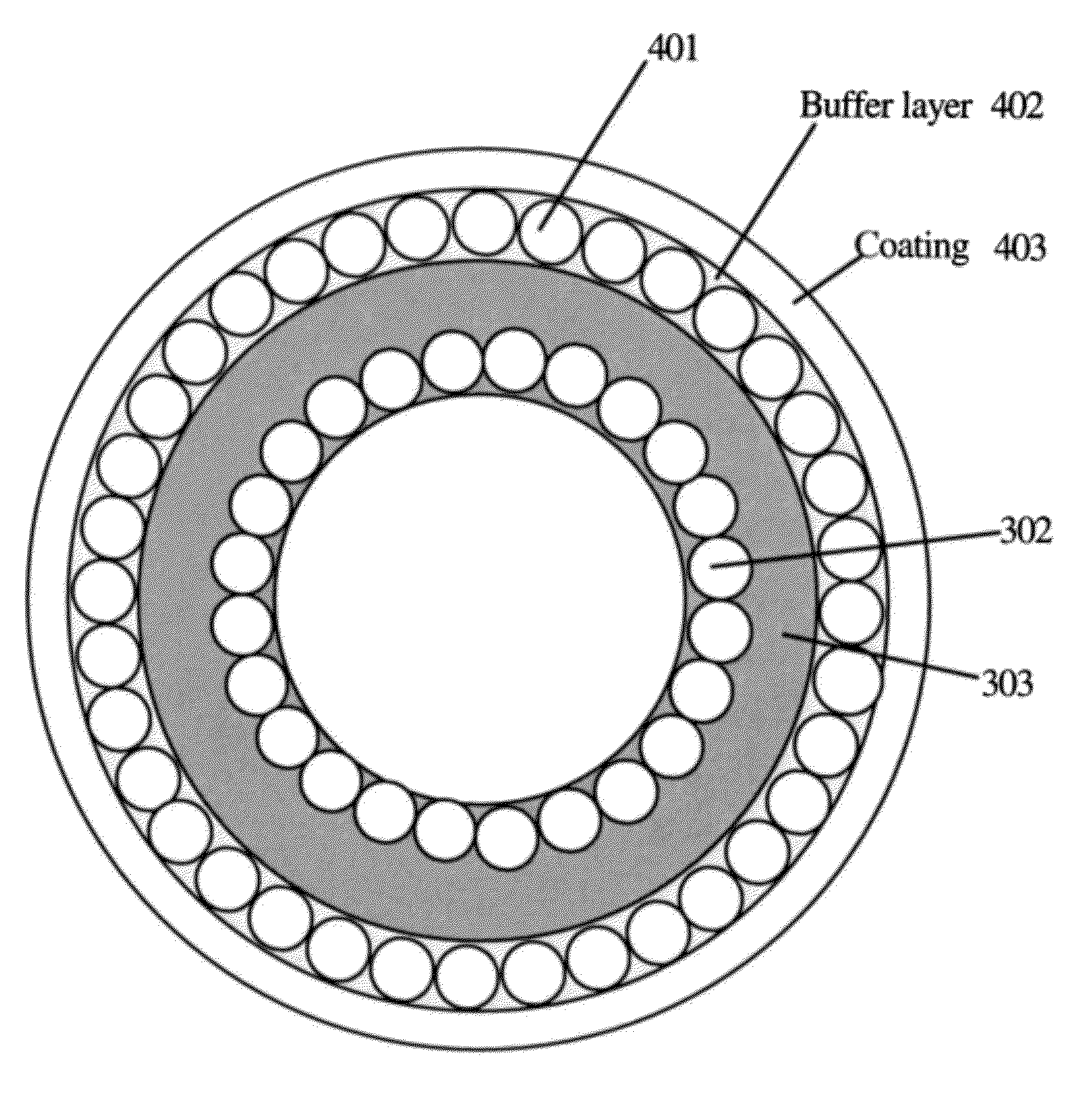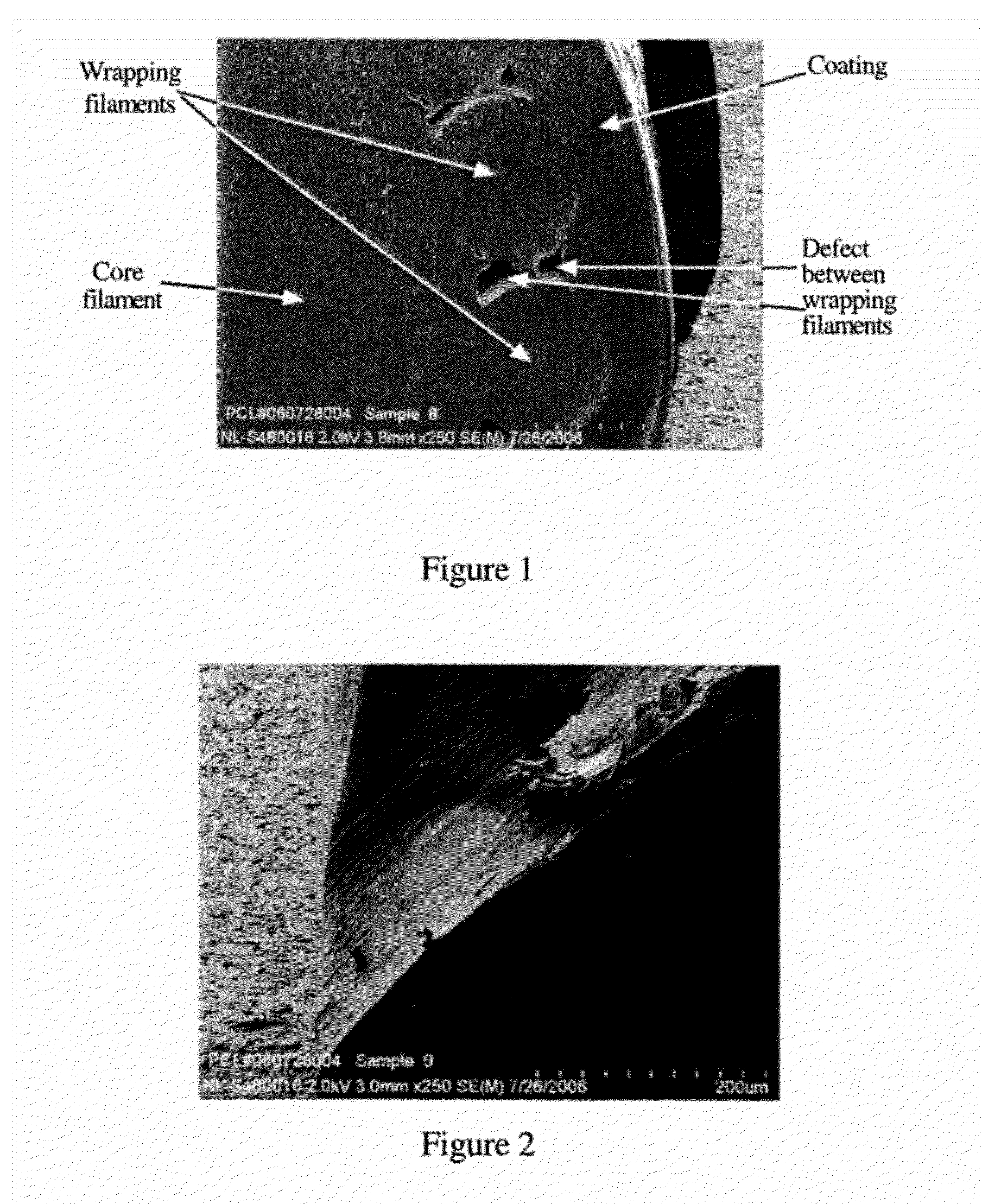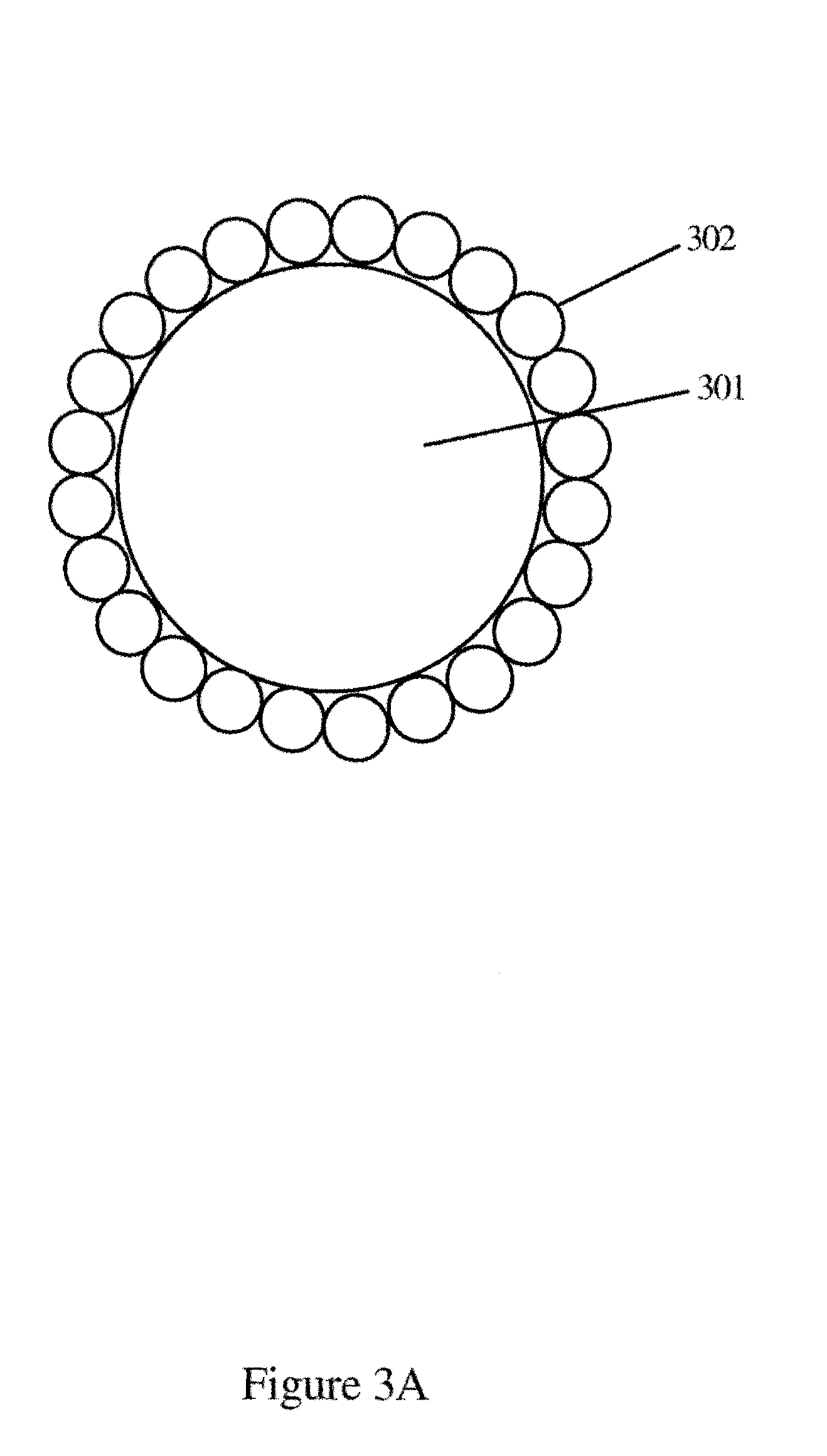Composite coating for strings
- Summary
- Abstract
- Description
- Claims
- Application Information
AI Technical Summary
Benefits of technology
Problems solved by technology
Method used
Image
Examples
example 1
A Composite String with a Nylon 6 Buffer Layer
[0013]FIG. 3A illustrates a cross-section of a string for coating comprised of a monofilament core 301 wrapped with smaller diameter multi-filaments 302. Neat nylon 6 pellets (e.g., as may be commercially obtained from UBE Industries Inc. (product name: UBE SF 1018 A)) were melted. Referring to FIG. 3B, the neat nylon 6 buffer layer coating 303 was applied (e.g., by an extrusion process at temperatures ranging from approximately 220° C. to 270° C.). The thickness of the buffer layer 303 may be from 10 to 100 micrometers. The gaps between the multi-filaments 302 were substantially fully filled by the neat nylon 6 coating 303.
[0014]Referring to FIG. 3C, a wear-resistant coating 304 was then coated onto the string (e.g., by an extrusion process at temperatures ranging from approximately 240° C. to 280° C.). A nylon 6 / clay, nylon 6 / carbon nanotube (CNT) nanocomposite, or a clay / CNT co-reinforced nylon 6 nanocomposite may be employed as the w...
example 2
A Composite String with a Nylon 11 Buffer Layer
[0015]Again referring to FIG. 3A, the string for coating is a monofilament core 301 wrapped with smaller diameter multi-filaments 302. Neat nylon 11 (e.g., as may be commercially obtained from ARKEMA Inc.) was melted. Nylon 11 has a very good melt flow at temperatures over 220° C. Good impact strength and shear strength also make nylon 11 a good buffer layer material. In FIG. 3B, the neat nylon 11 buffer layer coating 303 was applied (e.g., by an extrusion process at temperatures ranging from approximately 190° C. to 270° C.). The thickness of the buffer layer 303 may be from 10 to 100 micrometers. The gaps between the multi-filaments 302 were substantially fully filled by the neat nylon 11 coating 303.
[0016]Referring to FIG. 3C, a wear-resistant coating 304 was then coated onto the string (e.g., by an extrusion process at temperatures ranging from approximately 240° C. to 280° C.). A nylon 11 / clay, nylon 11 / CNT nanocomposite, or a clay...
PUM
| Property | Measurement | Unit |
|---|---|---|
| Diameter | aaaaa | aaaaa |
| Viscosity | aaaaa | aaaaa |
Abstract
Description
Claims
Application Information
 Login to View More
Login to View More - R&D
- Intellectual Property
- Life Sciences
- Materials
- Tech Scout
- Unparalleled Data Quality
- Higher Quality Content
- 60% Fewer Hallucinations
Browse by: Latest US Patents, China's latest patents, Technical Efficacy Thesaurus, Application Domain, Technology Topic, Popular Technical Reports.
© 2025 PatSnap. All rights reserved.Legal|Privacy policy|Modern Slavery Act Transparency Statement|Sitemap|About US| Contact US: help@patsnap.com



